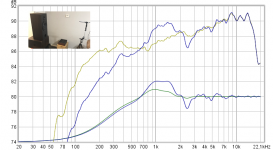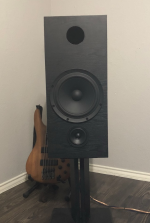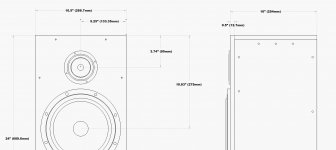Do you have a DATS or other means to measure the mH of those inductors? Are they labeled as such from manufacturer? One other thing - are you sure you only have one speaker on/connected at a time during measurement? Ambient sound from second speaker can really mess things up if forget to disconnect.
Thanks for concerns and your response.
as soon as i saw the behavior in xsim I tried to find a way to measure the inductors but it is not possible since I do not have the equipment (including DATS), they are bought from partsexpress, manufactured by Jantzen and are labeled 2.5mH, here s the link : Jantzen Audio 2.5mH...
and yes the other speaker was disconnected the whole time, each driver connected to amp separately for driver measurements.
Well if it came from PE and Jantzen it’s probably correct. Are you sure you don’t have any other audio software running in the background? Once I had a SRS audio running in background applying dynamic EQ bass boost - which gave strange frequency response and high distortion. Similar thing happened with Jriver running in background as a pass-through sound card DSP processor - while I acquired sweeps with REW. These things can be disabled if you are aware of them and turn them off.
Try a new computer that has all junk bloat ware stripped off.
Try a new computer that has all junk bloat ware stripped off.
Hi Aatto if 10F is also ported you at a level of 4th order roll off at lows plus then add baffle step loss and a electrical high pass capacitor will add somewhere close to two more orders ?
For info pages back i simulated 10F baffle step and difracton for situation and it shows relative problems at about 2,5kHz, the two lower traces below shows 10F baffle step and difraction with a sharp edge verse 3 inch radius round over, the two upper ones shows 10F factory sheet response plus current baffle times factory response:
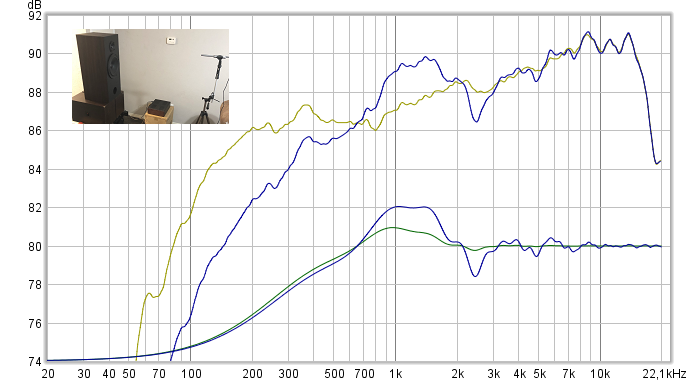
For info pages back i simulated 10F baffle step and difracton for situation and it shows relative problems at about 2,5kHz, the two lower traces below shows 10F baffle step and difraction with a sharp edge verse 3 inch radius round over, the two upper ones shows 10F factory sheet response plus current baffle times factory response:
Attachments
Possibly cause of that 1.5khz dip - can be resolved by lateral offset of the midtweeter Sometimes. My speaker had the offset on the XPS box and then I got rid of it on the Baltic birch ply box, but did not notice such a deep dip.
I still don’t know what’s going on with why your drivers are not falling off gradually at -6dB/octave from theoretical XO point. Could be that you have an air leak in your dagger rear chamber?
I still don’t know what’s going on with why your drivers are not falling off gradually at -6dB/octave from theoretical XO point. Could be that you have an air leak in your dagger rear chamber?
Hi Byrtt
So I m dealing with baffle diffraction ?
Not sure its only responsible reason but what you see in a baffle simulation had been trustfull data for years into real world scenarios, should you ever change your enclosure for 10F suggest use some simulation before its position is locked down and if you shoot for a reference speaker suggest also use as big round overs as possible because it pays back as you can see in previous post (green trace), it is said difraction is very sensible for our ears and a non linear distortion that is worst at high levels, in my view its good enough you have 10F vertical centered because that ensure ripple distortion is same on speakers left verse right side and ripple could to some point be EQed away if wanted, room reflections whether they left or right sided will then start up being coherent in response, if one offset 10F on vertical axis simulation will show much better performance but only on axis because now we get the problem that off axis left verse right side are not coherent anymore, a quick guess is your high ripple problem is because there is close to same distance out to three edges, so a move of its position a little up or down would have helped. Should you have some round pipe isolation laying around and the curiosity maybe try tape it on the three closest edges and measure again.
Possibly cause of that 1.5khz dip - can be resolved by lateral offset of the midtweeter Sometimes. My speaker had the offset on the XPS box and then I got rid of it on the Baltic birch ply box, but did not notice such a deep dip...
Hi X, Aatoo's baffle (see below) is the one that was simulated and different than yours, even being in vertical center its probably not many centimeters up or down that would enhance it to less ripple as for your build and experience.
Attachments
Last edited:
Not sure its only responsible reason but what you see in a baffle simulation had been trustfull data for years into real world scenarios, should you ever change your enclosure for 10F suggest use some simulation before its position is locked down and if you shoot for a reference speaker suggest also use as big round overs as possible because it pays back as you can see in previous post (green trace), it is said difraction is very sensible for our ears and a non linear distortion that is worst at high levels, in my view its good enough you have 10F vertical centered because that ensure ripple distortion is same on speakers left verse right side and ripple could to some point be EQed away if wanted, room reflections whether they left or right sided will then start up being coherent in response, if one offset 10F on vertical axis simulation will show much better performance but only on axis because now we get the problem that off axis left verse right side are not coherent anymore, a quick guess is your high ripple problem is because there is close to same distance out to three edges, so a move of its position a little up or down would have helped. Should you have some round pipe isolation laying around and the curiosity maybe try tape it on the three closest edges and measure again.
Hi X, Aatoo's baffle (see below) is the one that was simulated and different than yours, even being in vertical center its probably not many centimeters up or down that would enhance it to less ripple as for your build and experience.
Thanks BYRTT for very well explained reply.
I will find some isolation or something to try to test if it helps.
I moved the speaker to the center of my largest room ( still tiny !) place it diagonally and placed the mic 60cm from the baffle and the results are the same. still have the dip, floor reflections changed a little, but that is not important.
I disassembled the XO and measured each driver respond with and without the associated crossover part.
I used one channel of the amp to feed the driver and there were no other software or dsp or anything interfering with signal.
I also tried the R2 and R3+C1 zobel as well.
Each measurement is 4 sweeps 10 to 22k and also did the 6 cycle thingy as well.
I m not sure if the impedance curve has that much impact on the rolling offs, but clearly this crossover does not act like any of simulated ones.
Edit: sorry for rotated pix, not sure what happened.
I disassembled the XO and measured each driver respond with and without the associated crossover part.
I used one channel of the amp to feed the driver and there were no other software or dsp or anything interfering with signal.
I also tried the R2 and R3+C1 zobel as well.
Each measurement is 4 sweeps 10 to 22k and also did the 6 cycle thingy as well.
I m not sure if the impedance curve has that much impact on the rolling offs, but clearly this crossover does not act like any of simulated ones.
Edit: sorry for rotated pix, not sure what happened.
Attachments
-
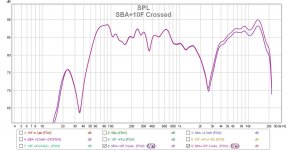 SBA+10F Crossed.jpg118.8 KB · Views: 84
SBA+10F Crossed.jpg118.8 KB · Views: 84 -
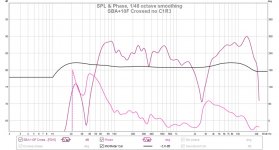 SBA+10F Crossed no C1R3.jpg120.7 KB · Views: 73
SBA+10F Crossed no C1R3.jpg120.7 KB · Views: 73 -
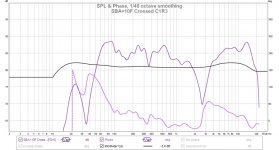 SBA+10F Crossed C1R3.jpg121.9 KB · Views: 92
SBA+10F Crossed C1R3.jpg121.9 KB · Views: 92 -
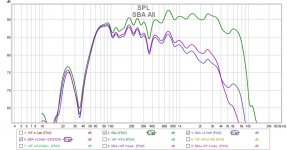 SBA All.jpg130.6 KB · Views: 285
SBA All.jpg130.6 KB · Views: 285 -
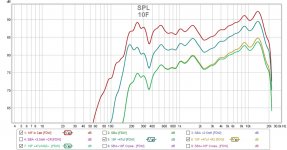 10F All.jpg131.1 KB · Views: 299
10F All.jpg131.1 KB · Views: 299 -
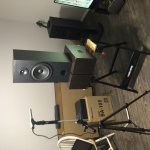 IMG_3308.jpg643.6 KB · Views: 117
IMG_3308.jpg643.6 KB · Views: 117 -
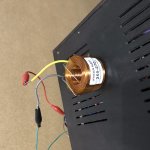 IMG_3309.jpg596.9 KB · Views: 109
IMG_3309.jpg596.9 KB · Views: 109 -
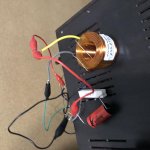 IMG_3310.jpg620.7 KB · Views: 99
IMG_3310.jpg620.7 KB · Views: 99 -
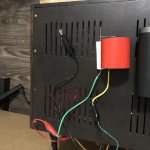 IMG_3311.jpg618.7 KB · Views: 91
IMG_3311.jpg618.7 KB · Views: 91 -
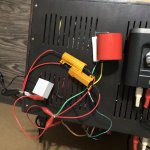 IMG_3312.jpg718.7 KB · Views: 90
IMG_3312.jpg718.7 KB · Views: 90
Last edited:
The sba with inductor looks right to me, but the 10f with cap is weird, and not what it should be.
Got any other caps laying around you could try?
Also, I would do a check and compare the 10F curves with X's own curves versus yours.
Here's X's curves.... The sba is reasonable, but your 10F is way off...
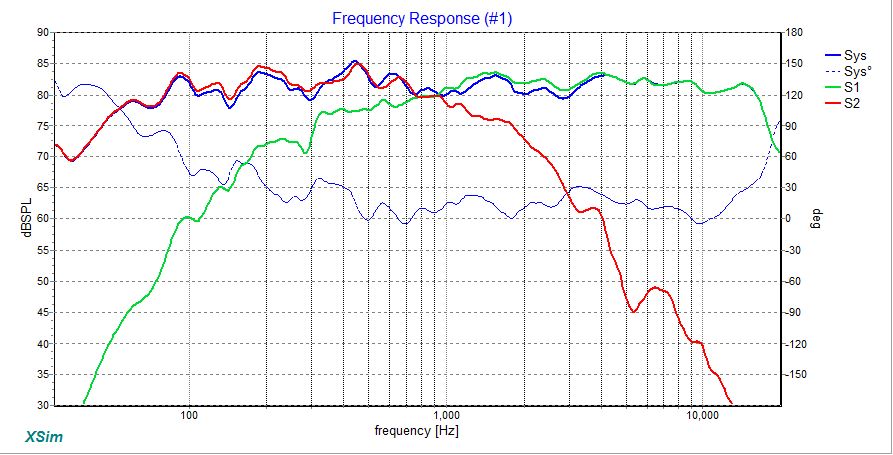
Got any other caps laying around you could try?
Also, I would do a check and compare the 10F curves with X's own curves versus yours.
Here's X's curves.... The sba is reasonable, but your 10F is way off...
Last edited:
The sba with inductor looks right to me, but the 10f with cap is weird, and not what it should be.
Got any other caps laying around you could try?
Also, I would do a check and compare the 10F curves with X's own curves versus yours.
Here's X's curves.... The sba is reasonable, but your 10F is way off...
Unfortunately not, i do not have any caps that size, but both crossover behave the same so it is unlikely that both caps are bad but possible.
This may help better understanding of my baffle ( please see the attachment )BYRTT said:Not sure its only responsible reason but what you see in a baffle simulation had been trustfull data for years into real world scenarios, should you ever change your enclosure for 10F suggest use some simulation before its position is locked down...
with my limited knowledge i tried not to have equal distance from the the edges.
Attachments
Last edited:
I will do more testing on this, for now I wanted to go back to my DSP setup specially now that I finished my accuphase clone, but I burned my FH9 (LF amp) last night, I was trying to replace the heatsinks on it and I guess there was a short and it start smoking from somewhere, good news is the other channel is still good and I will keep it for testing, I did purchase a icepower 50asx2se module before the FH9 go bad as a replacement for LF drivers as I read they have a very powerful signature bass respond, so the FH9s were retiring anyway, too bad it died two days before retirement 
I missed a lot of the conversation, being on vacation for the last month.
Trying to figure out your very ragged 10F response. It's supposed to be one of the flattest drivers out there, but your curves are nothing but. It looks horrible and must sound so bad.
I was wondering if the drivers were bad, but it would be very strange if both drivers were bad equally with the same FR plot. You did test both 10F drivers, right? Not always the same one in the same enclosure?
Or maybe your mic is damaged? If the setup doesn't sound as bad as it looks in your measurements, the fault could be a bad mic. Or a wrong calibration file if you are using one. If you don't have another mic in the house to test, maybe just your phone's mic (or tablet) and some free SPL apps out there to see if the same dips and rising response show up.
Just trying to make sense of it all, as it doesn't make sense at all!
Swap everything, mic, cables, amps, positions of both mic and enclosure, electrical sockets or use a battery, and measure everything. There is something wrong in your setup, and you have to find the gremlin.
Trying to figure out your very ragged 10F response. It's supposed to be one of the flattest drivers out there, but your curves are nothing but. It looks horrible and must sound so bad.
I was wondering if the drivers were bad, but it would be very strange if both drivers were bad equally with the same FR plot. You did test both 10F drivers, right? Not always the same one in the same enclosure?
Or maybe your mic is damaged? If the setup doesn't sound as bad as it looks in your measurements, the fault could be a bad mic. Or a wrong calibration file if you are using one. If you don't have another mic in the house to test, maybe just your phone's mic (or tablet) and some free SPL apps out there to see if the same dips and rising response show up.
Just trying to make sense of it all, as it doesn't make sense at all!
Swap everything, mic, cables, amps, positions of both mic and enclosure, electrical sockets or use a battery, and measure everything. There is something wrong in your setup, and you have to find the gremlin.
I don’t think the response looks ragged or bad - Aatto is showing data with 5dB major vertical divisions and so that accentuates the response. The main issue is how 10F has response that falls off steeply below 150Hz whereas should’ve have been gradual falloff from 1kHz. Unless that capacitor is a whole lot bigger than rated.
- Home
- Loudspeakers
- Full Range
- 10F/8424 & RS225-8 FAST / WAW Ref Monitor
